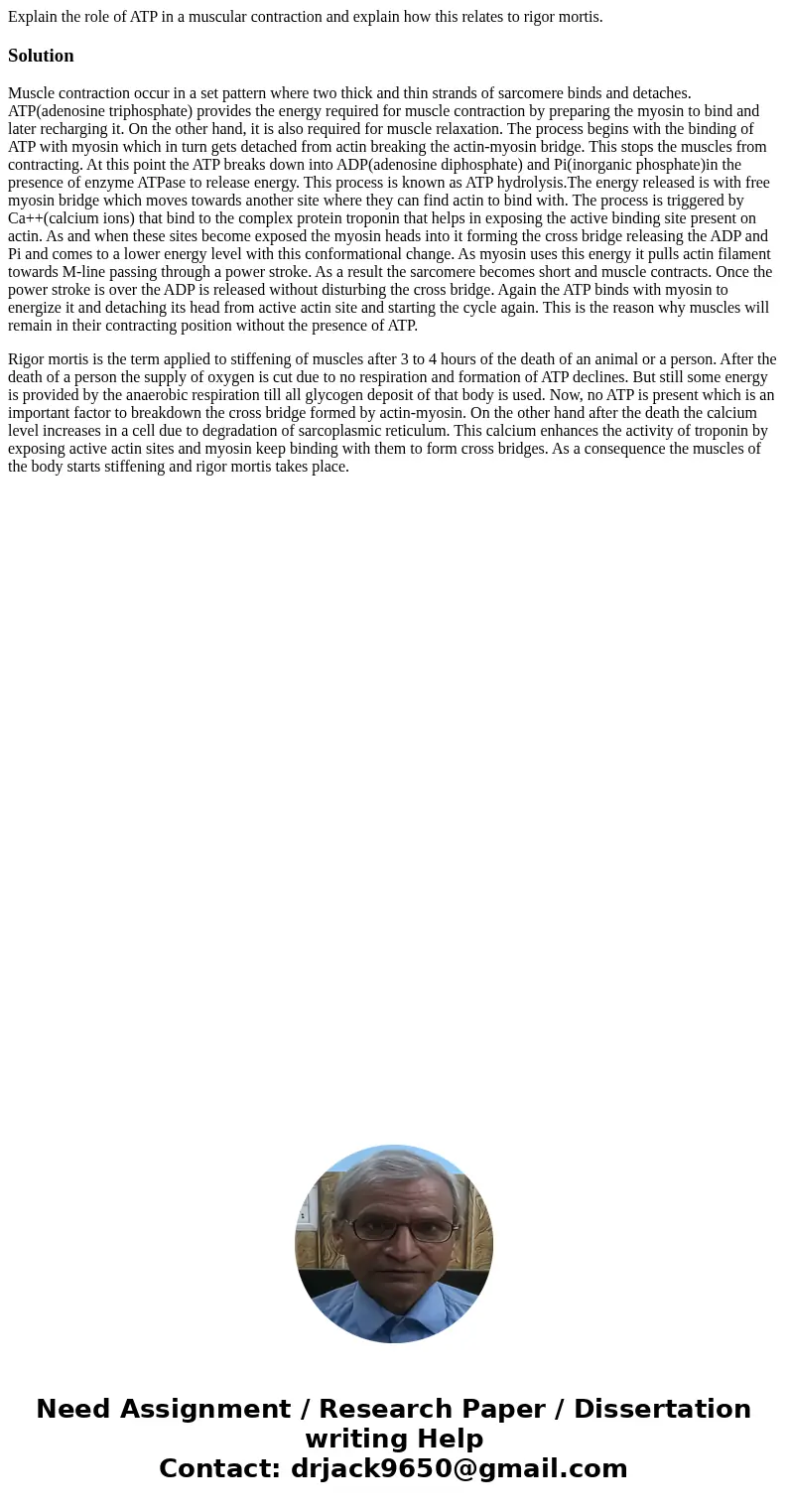Explain the role of ATP in a muscular contraction and explai
Explain the role of ATP in a muscular contraction and explain how this relates to rigor mortis.
Solution
Muscle contraction occur in a set pattern where two thick and thin strands of sarcomere binds and detaches. ATP(adenosine triphosphate) provides the energy required for muscle contraction by preparing the myosin to bind and later recharging it. On the other hand, it is also required for muscle relaxation. The process begins with the binding of ATP with myosin which in turn gets detached from actin breaking the actin-myosin bridge. This stops the muscles from contracting. At this point the ATP breaks down into ADP(adenosine diphosphate) and Pi(inorganic phosphate)in the presence of enzyme ATPase to release energy. This process is known as ATP hydrolysis.The energy released is with free myosin bridge which moves towards another site where they can find actin to bind with. The process is triggered by Ca++(calcium ions) that bind to the complex protein troponin that helps in exposing the active binding site present on actin. As and when these sites become exposed the myosin heads into it forming the cross bridge releasing the ADP and Pi and comes to a lower energy level with this conformational change. As myosin uses this energy it pulls actin filament towards M-line passing through a power stroke. As a result the sarcomere becomes short and muscle contracts. Once the power stroke is over the ADP is released without disturbing the cross bridge. Again the ATP binds with myosin to energize it and detaching its head from active actin site and starting the cycle again. This is the reason why muscles will remain in their contracting position without the presence of ATP.
Rigor mortis is the term applied to stiffening of muscles after 3 to 4 hours of the death of an animal or a person. After the death of a person the supply of oxygen is cut due to no respiration and formation of ATP declines. But still some energy is provided by the anaerobic respiration till all glycogen deposit of that body is used. Now, no ATP is present which is an important factor to breakdown the cross bridge formed by actin-myosin. On the other hand after the death the calcium level increases in a cell due to degradation of sarcoplasmic reticulum. This calcium enhances the activity of troponin by exposing active actin sites and myosin keep binding with them to form cross bridges. As a consequence the muscles of the body starts stiffening and rigor mortis takes place.

 Homework Sourse
Homework Sourse